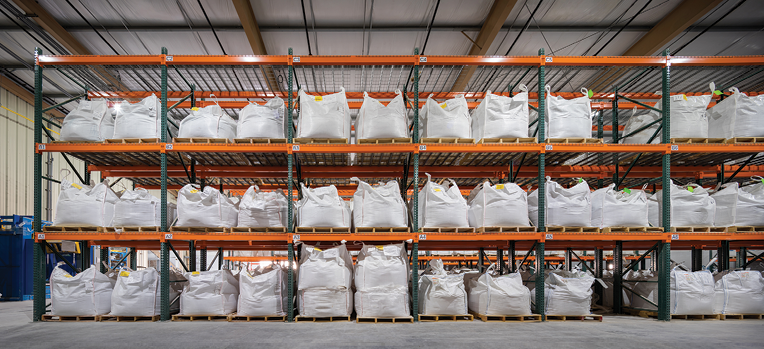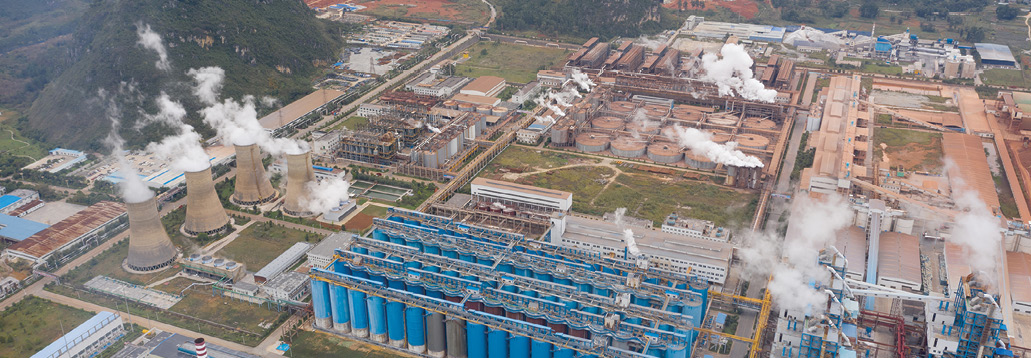North American Mining reviews the current state and recent developments in the North American rare earth elements industry, highlighting its potential for growth and innovation.
By Jonathan Rowland

Rare earth elements (REEs) are a set of 17 metallic elements that are essential components in more than 200 products across a wide range of applications, especially in high-tech consumer products, such as cell phones, computer hard drives, flat-screen monitors, and televisions, according to the U.S. Geological Survey. They also have significant defense applications, including electronic displays, guidance systems, lasers, and radar and sonar systems.
However, their role in producing technologies critical to the net-zero energy transition has recently brought these minerals into the spotlight.
For example, neodymium (or NdFeB) magnets “are the strongest, most efficient permanent magnets commercially available,” said Matt Sloustcher, senior vice president of Communications and Policy at MP Materials, which owns the Mountain Pass REE mine in California. “NdFeB magnets enable the functionality of electric motors, actuators, and generators in hybrid and electric vehicles, robots, wind turbines, drones, electronics, and defense systems. As the economy electrifies and becomes more automated, the importance of REEs and NdFeB magnets will increase.”
The International Energy Agency (IEA) expects demand for REEs to grow sixfold by 2040. Although not actually rare, China dominates current supplies of REEs. Again, according to IEA figures, the country accounts for over 60% of mine production but up to about 90% of refined REE production. These supply-side issues have made REE supply a political issue.
“REEs were discovered in China in 1927,” Greg Gillian, vice president of Mining, Minerals, and Metals at consultancy, Stantec, told North American Mining. “Small-scale production started in the 1950s. It was not until the late 1980s that the Chinese government became interested in larger-scale REE production, with the Chinese REE industry undertaking significant research into REE chemistry and applications. The Chinese government began adopting export quotas tied to the potential for REEs in future technology sectors.”
In the 1990s, “China established partnerships with Japan, the US, and Canada to support further research and committed government funding for new facilities and scaling innovative technologies. This catapulted China to the forefront of REE production,” Gillian concluded.
Fast forward a few decades and China’s influence over REE supply is now causing geopolitical headaches for policymakers. While it is true that MP Materials’ Mountain Pass has made the U.S. the second-largest producer of REEs after China, it remains the only operating REE mine in North America. A second, at Vital Metal’s Nechalacho-Thor Lake in Canada, undertook a five-month mining campaign in 2021, but it is not currently operating. The company announced a deal to sell its remaining stockpiled REE material from that campaign to the Saskatchewan Research Council in June 2024.
There is also only one REE processing facility. However, two more are under development, noted Stantec’s Brian Mashford, senior vice president of Mining, Minerals, and Metals: one in Utah and another in Saskatchewan.
“From a strategic point of view, more domestic REE supply and processing capacity is needed,” argued Donald Swartz, CEO of American Rare Earths, who is developing the Halleck Creek REE project. It is a point Ashley Burke, senior vice president of Communications at the National Mining Association (NMA), agreed with, telling North American Mining that “we need vastly more mines to come online to supply the growing global need of the world’s hungry manufacturing lines.”
Securing a North American REE supply chain also “goes beyond securing raw materials; it includes the entire supply chain down to the component level,” said MP Materials’ Sloustcher, noting China’s additional dominance over the manufacturing of alloys as finished magnets. “Diversifying and creating balance across the supply chain by onshoring production of metals, alloys, and magnets is thus critical.”
“We see the development of domestic supply chains outside of the mines as crucial,” agreed Stantec’s Mashford. “Without an established manufacturing sector in North America, the ultimate value of REEs will never be realized.”
There has already been movement by the Biden administration here. In May 2024, President Joe Biden instructed U.S. Trade Representative Katherine Tai to impose significant tariffs on Chinese imports, including permanent rare earth magnets and critical minerals (including REEs). “This is an integral first step toward reshoring the REE industry,” American Rare Earths’ Swartz said. “It is encouraging to see the Biden administration acknowledge that the US can no longer rely on geopolitical rivals to supply materials essential to national security.”
In addition, the U.S. government is taking “important steps through grants and loans from the Department of Defense (DoD) and the Department of Energy (DoE) to support mining and processing,” said the NMA’s Burke. Indeed, according to figures from the DoD, the department has awarded more than $439 million to establish domestic REE supply chains, including separating and refining U.S.-mined REEs and developing downstream processes to convert those into metals and magnets.
Yet, “far too few mines have achieved full federal permitting and advanced to production under this administration, and that has to change,” concluded Burke. “It will take strong and decisive action from a growing bipartisan group of lawmakers to get things done and streamline the permitting process – something so many on both sides of the aisle have said is a priority.”
Challenges to REE supply chain development
In addition to political hurdles around mineral development, there are “key economic and technical challenges to developing a dependable and sustainable domestic REE supply chain in North America,” explained Stantec’s Gillian. “We often find REEs in low concentrations and dispersed in the earth, making them both difficult and expensive to extract, while project and permitting is a lengthy process. These factors make REE projects less attractive to the investment community than other critical minerals such as lithium.”
The processing of REEs “also takes more energy than other elements,” continued Gillian. “REEs also often exist in and around uranium and other radioactive materials,” added Gillian’s colleague, Mashford, “which can release harmful chemicals into the environment, with long-lasting impacts, unless managed carefully.”
Combining these factors, REE projects tend to have a much higher capital intensity than other mineral projects. “Government funding needs to increase to secure domestic resources,” concluded Mashford. “From extraction to downstream domestic manufacturing, investment from government agencies may help, especially when other investors are hesitant. We also require more government investment in innovation and technology to overcome the environmental challenges associated with REE mining. This could mean potentially shorter permitting for the REE mining and processing.”

REEs in profile:
MP Materials
MP Materials is a fully integrated U.S. REE miner, mineral processor, refiner, and magnet manufacturer, owning and operating the Mountain Pass mine. In 2023, the company produced about 12% of global REE mine production and has produced over 40,000 tons of rare earth oxides (REO) in concentrate in each of the past three years. The company has also begun production of separated neodymium-praseodymium (NdPr) and other refined REEs at a newly commissioned processing facility co-located at Mountain Pass. This “represents a strong foundation from which to build out the downstream permanent magnet supply chain,” said Senior Vice President Matt Sloustcher.
The company is further extending its downstream business by constructing a fully integrated NdFeB magnet facility in Fort Worth, Texas. This will transform REEs produced at Mountain Pass into metals, alloys, and finished NdFeB magnets, establishing an end-to-end U.S. supply chain. Production of magnet precursor materials is expected to begin later this year, with finished NdFeB magnets anticipated in late 2025 for sale to General Motors and other customers.
“Although we have focused heavily on initiating production of separated REO over the past three years, we have never lost sight of the opportunity to pursue growth in our upstream business,” continued Sloustcher. “Our technical and operations teams have been working to develop and pilot high-return process improvements to our existing concentrator facility that better utilize the entire Mountain Pass resource.”
The company employs a cutoff grade of 2.5%, which is “higher than many development projects,” Sloustcher said, and “gives a sense of what might have been discarded as uneconomic in the past.” Over the past 18 months, the company has piloted how to extract value from these marginal feedstocks. “While it is early days, the pilot data is encouraging. Over the next four years, we are confident we can increase our overall concentrate production by approximately 50% with a modest capital investment.”

REEs in profile:
American Rare Earths
American Rare Earths’ flagship project at Halleck Creek, Wyo., has “the potential to be a world-class REE project and offers expedited state permitting, as we have designed the mine – to be known as Cowboy State Mine – on Wyoming State Mineral Leases, rather than on federal land,” CEO Donald Swartz told North American Mining. “We recently released the Halleck Creek Scoping Study, which confirmed the low-cost scalability of the project with a Resource of 1.8 million metric tonnes of magnetic REEs.”
The scoping study outlined the potential to produce at $40/kg. In comparison, China Northern Rare Earths, the world’s largest integrated producer, recently published operating costs of $50/kg, noted Swartz. “These costs make the project very compelling, as it can be permitted, developed, and constructed very quickly in parallel with the phase-in of the most recent tariff announcements.”
A DoD/Darpa research project preconcentrated the Halleck Creek ore using conventional technology at a 12:1 ratio. Additional studies have shown the leaching process does not require ‘cracking’ of the ore. This contrasts with other hard-rock deposits, which require temperatures of 1,000°C to process. These factors make the project “more environmentally friendly than others while being competitive even with the subsidized state-owned entities of China,” added Swartz.
“We are currently in the next steps of permitting, metallurgy, and proceeding to a pre-feasibility-level engineering study,” concluded Swartz. “We began another drilling campaign in early July and continue to move forward with plans for a test mine, as well as the Cowboy State Mine, at 400 acres initially, to lower CAPEX for market entry and reduce financing risk.”

REEs in profile:
Lynas Rare Earths
In addition to operations in Australia, Lynas Rare Earths is constructing a rare earths processing facility in Texas with funding from the DoD. The facility will be located on a 149-acre site in Seadrift and produce both heavy and light REEs for the U.S. defense industry and other commercial manufacturers. Lynas’ Mt Weld REE mine in Western Australia will provide feedstock.
During the first quarter of 2024, detailed engineering, procurement, and approvals activities continued for the Seadrift facility. Procurement activities are ramping up, with earthworks expected to start at the site by the end of this calendar year, subject to all necessary approvals, and operations scheduled to begin in FY2026 (1 July 2025 to 30 June 2026).
Lynas “was established from the ground up as an ethical and environmentally responsible REE miner and producer,” CEO and managing director Amanda Lacaze told North American Mining. “We invest heavily in research and innovation, focusing on improving our processes and technologies. At our Mt Weld mine, we are investing over $30 million in a state-of-the-art water recycling facility and are in final negotiations for a gas-firmed hybrid renewable power station. We also plan to implement technology at our Seadrift location to recycle approximately 90% of our process water and pilot a chemical recycling system that targets a significant reduction in Scope 3 emissions from chemicals used in our separation process.”

REEs in profile:
ElementUSA
In contrast to the other REE projects discussed here, ElementUSA is not mining REEs but aiming to recover REEs, among other elements, from the tailings (known as red mud) of alumina refining. This material is “primarily iron oxide – hence its color,” Chris Young, chief strategy officer at the company, explained. “But it also contains residual alumina and other minerals, including REEs. Content depends on the properties of the bauxite, but we have measured 3000ppm REE content at our Gramercy site in Louisiana, including neodymium, praseodymium, and scandium.”
“Core to the process is converting the iron oxide into metallic iron, which we separate out and for supply into the US steel industry,” explained Young. “This leaves a slag with a high concentration of REEs. We then remove the neodymium and praseodymium using conventional solvent extraction. None of the technologies used in the process are novel; they are all proven in commercial applications. We are now working to improve the economics of the process, as well as expanding our research efforts and collaboration with other companies to tap into other technologies.”
The extraction of REEs from red mud (as well as from other industrial residues, such as coal tailings) is “compelling for several reasons,” concluded Young. “We are dealing with an economic and environmental liability while providing essential minerals and local jobs. It is also worth noting that there are four billion tons of red mud globally. That is a significant amount of potential value.”
Future of REEs in North America
What, then, of the future? “We would like to see a more sustainable REE extraction process. This would help improve public perception and could help facilitate new mine permitting and funding,” said Gillian. “We would also like to see improved engagement with Indigenous communities,” added his Stantec colleague, Mashford. “Since REE deposits are often in remote areas of Canada and the U.S., it will be crucial to engage with these communities early in the process to improve permitting timelines, provide new or improved infrastructure within the communities, and create jobs for local people.”
Finally, as Mashford concluded, “we would like to see more support, both via funding and social sentiment, to mine REEs domestically. This will help the North American economy by creating jobs in the mining and manufacturing/downstream use sectors. It would also allow us to be a strategic global partner in creating resilient and diversified permanent magnet value chains.”
